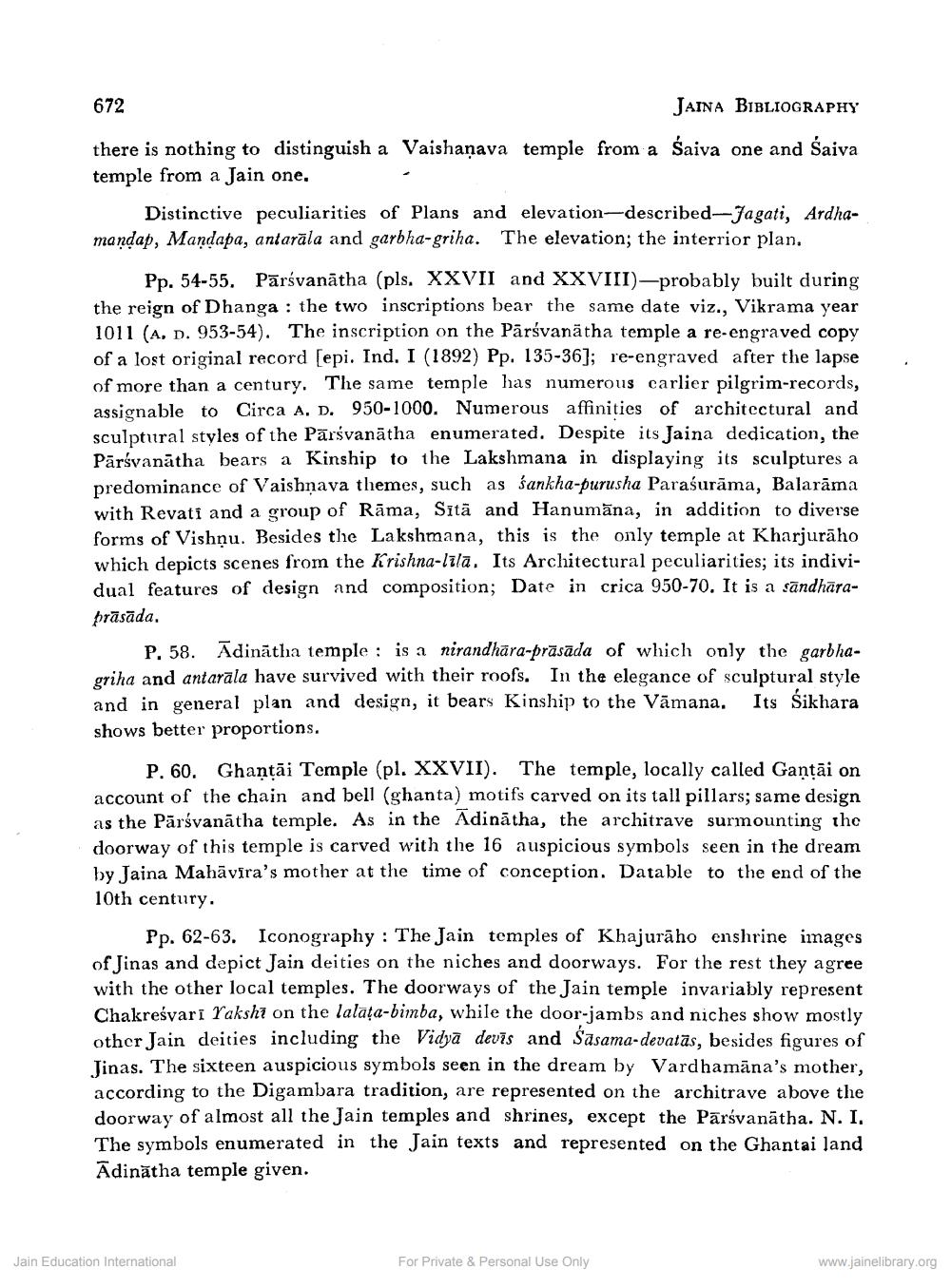________________
672
JAINA BIBLIOGRAPHY
there is nothing to distinguish a Vaishanava temple from a Saiva one and Saiva temple from a Jain one.
Distinctive peculiarities of Plans and elevation-described-Jagati, Ardhamandap, Mandapa, antarāla and garbha-griha. The elevation; the interrior plan.
Pp. 54-55. Pārsvanātha (pls. XXVII and XXVIII)-probably built during the reign of Dhanga : the two inscriptions bear the same date viz., Vikrama year 1011 (A, D. 953-54). The inscription on the Pārsvanātha temple a re-engraved copy of a lost original record [epi. Ind. I (1892) Pp. 135-36]; re-engraved after the lapse of more than a century. The same temple has numerous carlier pilgrim-records, assignable to Circa A. D. 950-1000. Numerous affinities of architectural and sculptural styles of the Pārsvanātha enumerated. Despite its Jaina dedication, the Pārsvanātha bears a Kinship to the Lakshmana in displaying its sculptures a predominance of Vaishnava themes, such as sankha-purusha Paraśurāma, Balarama with Revati and a group of Rāma, Sītā and Hanumāna, in addition to diverse forms of Vishnu. Besides the Lakshmana, this is the only temple at Kharjurāho which depicts scenes from the Krishna-lila. Its Architectural peculiarities; its individual features of design and composition; Date in crica 950-70. It is a sāndhāraprāsāda.
P. 58. Adinātha temple : is a nirandhāra-prāsāda of which only the garbhagriha and antarāla have survived with their roofs. In the elegance of sculptural style and in general plan and design, it bears Kinship to the Vāmana. Its Sikhara shows better proportions.
P. 60. Ghantāi Temple (pl. XXVII). The temple, locally called Gantāi on account of the chain and bell (ghanta) motifs carved on its tall pillars; same design as the Pārsvanātha temple. As in the Adinātha, the architrave surmounting the doorway of this temple is carved with the 16 auspicious symbols seen in the dream by Jaina Mahāvīra's mother at the time of conception. Datable to the end of the 10th century.
Pp. 62-63. Iconography : The Jain temples of Khajurāho enshrine images of Jinas and depict Jain deities on the niches and doorways. For the rest they agree with the other local temples. The doorways of the Jain temple invariably represent Chakreśyari Yakshi on the lalața-bimba, while the door-jambs and niches show mostly other Jain deities including the Vidyā devīs and Sasama-devatās, besides figures of Jinas. The sixteen auspicious symbols seen in the dream by Vardhamāna's mother, according to the Digambara tradition, are represented on the architrave above the doorway of almost all the Jain temples and shrines, except the Pārsvanātha. N. I. The symbols enumerated in the Jain texts and represented on the Ghantai land Ādinātha temple given.
Jain Education International
For Private & Personal Use Only
www.jainelibrary.org




